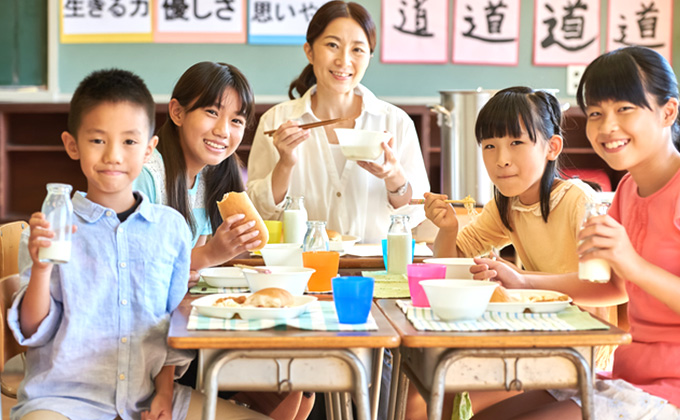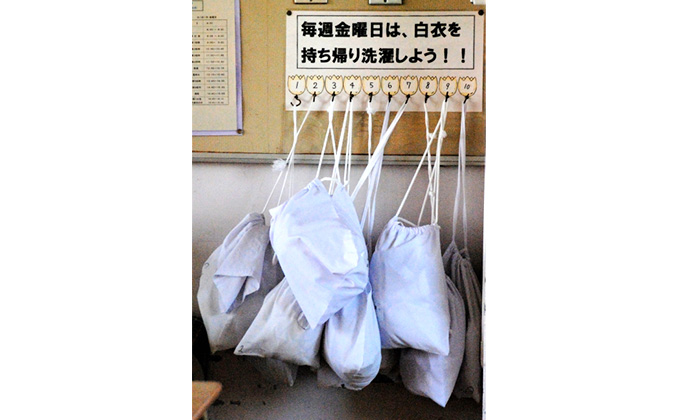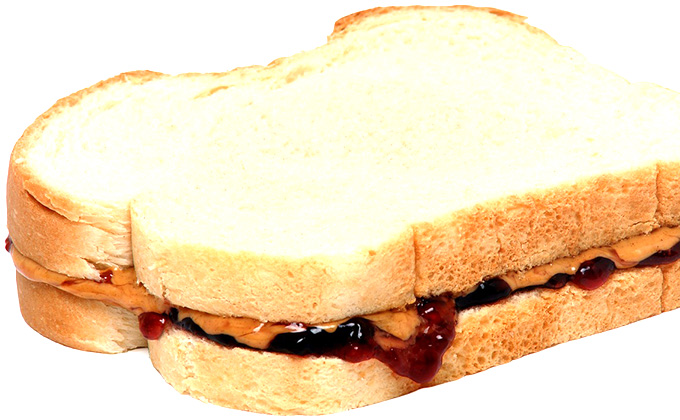TRG Info and Advice
School Lunch in Japan: An Education Collaboration
Every year when we travel home to Iowa for the holidays, my kids and I indulge in a Real American School Lunch. We document this experience with photographs and videos to shock our Japanese friends, students and colleagues. While the buffet-style service and hair-netted lunchroom staff, as well as the noise-level in an American school lunchroom are impressive, the food options are what really get our Japanese counterparts excited.
“You can choose from two different entrees?”
“Chocolate, strawberry or regular milk? Everyday?”
“Cakes and cookies for dessert, and not just on special occasions!”
Food Education
From these comments, it is obvious to me that Japanese kids do not realize how good they have it when it comes to school lunch. Ironically, the establishment of it is, in part, thanks to American relief efforts following WWII. US General Headquarters did a nutrition survey in Tokyo and recommended the implementation of a school lunch program. Both UNICEF and LARA (Licensed Agencies for Relief in Asia) provided crucial food support in the form of, among other things, wheat and soybean flour, soybean oil, and powdered milk. From there, the Japanese took over and turned school lunch into the spectacular, comprehensive program that it is today.
Shokuiku, or food and nutrition education, is an all-encompassing program that includes the history, cultural significance, production and delivery process, nutritional benefits, even the English names, of the food included in school lunch. When the School Lunch Law was enacted in 1954, its founders set four goals, including appropriate eating habits and an appreciation for those who have grown or prepared the ingredients; and established school lunch as part of the educational curriculum. After many adjustments and revisions, the School Lunch Law of 2009 expanded its aims to include an understanding of traditional Japanese food, especially local cuisine, as well as respect for life, nature and environmental conservation. With these lofty goals in place, it’s no wonder kids compete for the least amount of waste in their slop buckets.
Next Class: Lunch!
School lunch in Japan these days starts out with children moving their desks from the blackboard-facing rows of lesson time, to the small group arrangements of lunchtime. For management purposes, children are divided into han (small groups), and each group takes a turn being in charge of setting up and serving school lunch, usually for a week at a time.
To start, the students don aprons and hats, retrieve the carts of containers with the dishes for the day and fetch the milk. Then they set up the trays, bowls, chopsticks and plates, and begin expertly serving lunch to their classmates. Other students form an orderly line, accept their trays laden with rice, soup, meat or fish, vegetables and milk, and quickly return to their seats. Once everyone has been served, the class leaders for the day ask everyone to put their hands together for the pre-meal “blessing” of itadakimasu. Included in this word are feelings of appreciation for the sun, soil, rain, and the energy within the food, as well as the producers, distributors, and servers, and an overall humility for the privilege of enjoying a good meal.
During a typical school lunch, students often listen to public announcements made by the broadcasting club. These reports, usually researched by the students themselves, include information about the origin of the food, how it is grown or prepared, any cultural significance, and its nutritional value. In this way, kids learn about what they are eating, as they are consuming it, creating a lasting impression that is both physical and mental.
This listening time is sometimes dubbed “mogu-mogu” (chewing) time, encouraging students to focus on the flavors of the food in a quiet atmosphere. Following the announcements, they may be allowed to converse quietly with the members of their group, but the overall expectation is that everything will be consumed in a timely and reserved manner. At the elementary school level, students are not allowed to give away items they do not like. Junior high schoolers, on the other hand, usually have that privilege.
Manners, chopstick etiquette and sanitary practices are also included in the Shokuiku program. Servers, of course, are expected to wash their hands thoroughly before setting up the food, and wear surgical masks while distributing it. Holding your rice and soup bowls, consuming every last grain, and eating a little of each dish in turn until everything is gone, are among the points addressed. Chopstick etiquette like not pointing with your chopsticks and holding them properly is also covered.
If there are leftovers in the containers, students who have finished their lunches will rock, paper, scissors for them. The more popular the food item, the more passionate the competition to receive it, but the overall goal is to share equally among each other, so items may be cut in half, or even thirds! After that, it’s clean-up time. The group leader may collect the members’ trays and milk cartons to deliver to the lunch team, or individuals may take care of their own items, but no one does nothing! The closing “prayer” of goshicousamadeshita is uttered by all, and includes feelings of appreciation for the delicious meal, plus all of the work that went into its preparation.
You Leave Me No Choice
In Japan, schools post the daily lunch menu (complete with nutritional breakdowns and calorie content) on a monthly basis, but the option of being able to bring lunch from home on days the food is not to your liking borders on blasphemy. This is a relief for most parents in Japan, as Japanese obentos (boxed lunches) require extensive laboring in the kitchen from the wee hours of the morning creating cartoon character-inspired rice balls, apples cut to look like hedgehogs, tiny sausages with clever expressions carved into them, and other gorgeously arranged delicacies. These labors of culinary love are, for most families, required just once or twice a year for Sports Day or the annual field trip.
So when Japanese kids hear that American schoolchildren can bring lunch from home whenever there is something on the menu that they don’t like, they are imagining the beautifully crafted obentos of Sports Days and field trips.
“No, more like pb & j with the crusts cut off,” I quip, but “The Breakfast Club” reference sails over their heads.
“When I was in school, I made my own lunch,” I expand. “Ham and cheese or peanut butter and jelly sandwiches, some Cheetos in a baggie, carrot sticks and an apple.”
Finally, the shock registers on their faces. Many are not even allowed into the kitchen…








